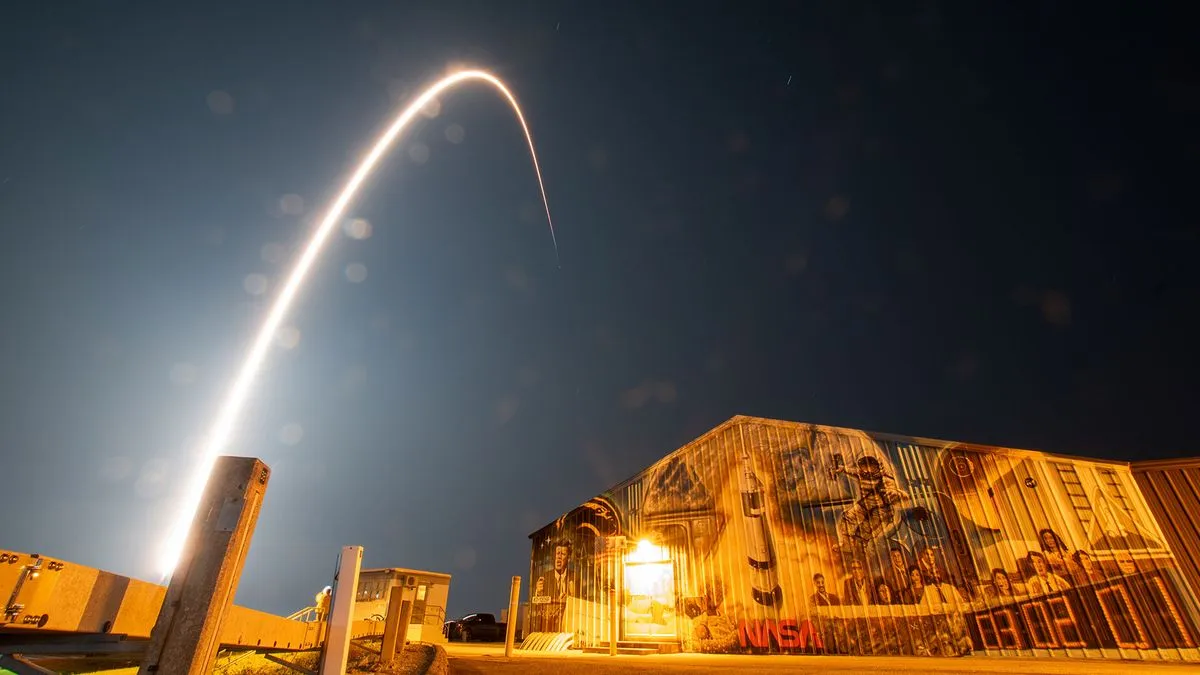
CAPE CANAVERAL, Fla. — The private Athena lunar lander is on its way to the moon, marking a significant milestone in space exploration. A SpaceX Falcon 9 rocket successfully launched shortly after sunset on February 26, carrying Athena and NASA's Lunar Trailblazer orbiter from NASA’s Kennedy Space Center (KSC). The launch illuminated the darkening sky, heralding a new chapter in lunar exploration.
Athena, built by Houston-based spaceflight company Intuitive Machines, carries 10 NASA science instruments. Many of these are designed to search for signs of water ice on the moon. Meanwhile, the Lunar Trailblazer orbiter will conduct similar research from a higher orbit. NASA considers these missions crucial as it aims to establish human settlements on the moon through its Artemis program.
"I'm very excited to see the science that our tech demonstrations deliver as we prepare for humanity's return to the moon and the journey to Mars," said Nicky Fox, associate administrator of NASA's Science Mission Directorate, during a prelaunch briefing.
The Falcon 9 launched at 7:16 p.m. EST (0017 GMT on February 27) from KSC’s Launch Complex-39A. Approximately 8.5 minutes later, the rocket's first-stage booster landed successfully on SpaceX's A Shortfall of Gravitas droneship. This marked the ninth launch and landing of the Falcon 9 booster (B1083) supporting the IM-2 mission. The upper stage of the Falcon 9 continued onward, deploying Athena into translunar injection orbit 43.5 minutes post-liftoff, followed by Lunar Trailblazer four minutes later.
Athena's mission, dubbed IM-2, is Intuitive Machines' second lunar venture in two years. Part of NASA's Commercial Lunar Payload Services (CLPS) program, IM-2 aims to explore water ice and other resources near the moon’s south pole. The mission's goal is to assess the potential for future missions to utilize these resources for sustainable habitability in space, a process known as in-situ resource utilization (ISRU).
To achieve these objectives, Athena carries two secondary vehicles: a mini rover named MAPP (Mobile Autonomous Prospecting Platform), built by Lunar Outpost, and Grace, an Intuitive Machines hopper robot designed to explore the landing site through a series of leaps.
IM-2 follows Intuitive Machines' historic first mission, IM-1, which launched in February 2024 on a CLPS flight. Despite a successful soft lunar landing, the IM-1 lander, Odysseus, tipped over during touchdown due to a landing leg issue. "This time, hopefully, we land in a more precise position," said Trent Martin, Intuitive Machines' senior vice president of space systems.
Athena targets the moon’s Mons Mouton region, where scientists believe significant water ice deposits exist for ISRU research. The lander is expected to reach lunar orbit within four to five days and land 1.5 to three days later, operating on the lunar surface for about 10 Earth days.
The lander's main scientific package, PRIME-1 (Polar Resources Ice Mining Experiment 1), includes two instruments: the Regolith Ice Drill for Exploring New Terrain (TRIDENT) and the Mass Spectrometer Observing Lunar Operations (MSolo). These will work together to collect and analyze samples from beneath the lunar surface. TRIDENT will extract material up to 3 feet (1 meter) deep, while MSolo will test the sample for compounds like water and carbon dioxide.
The IM-2 hopper, named Grace, is designed to explore Athena's landing area within a radius of nearly 1 mile (1.6 kilometers). Grace will use its thrusters and various navigational tools to explore the region, including the shadowed floor of a nearby crater, which is inaccessible to wheeled rovers.
The MAPP rover will bridge communication gaps with a state-of-the-art Lunar Surface Communications System (LSCS), developed by Nokia Bell Labs, marking the moon’s first cellular network deployment. Athena is also equipped with a Laser Retro-Reflector Array (LRA), which aids in precise positioning determination for orbiting and approaching spacecraft.
Concurrently, Lunar Trailblazer will map water ice deposits from lunar orbit, complementing Athena's close-up findings. "That will let us contextualize and extend the findings of the PRIME-1 mission," said Bethany Ehlmann, Lunar Trailblazer Principal Investigator.
The IM-2 mission was initially contracted by NASA for $47 million, eventually increasing to $62.5 million due to various agency requests, including temperature data from Athena’s instruments. Joel Kearns, deputy associate administrator for exploration at NASA's Science Mission Directorate, highlighted the value of obtaining unique information from this commercial mission.
Upon reaching lunar orbit, Athena will join other missions like Firefly Aerospace's Ghost Riders in the Sky and Japan-based ispace’s Resilience lander, both launched earlier in the year under NASA's CLPS program.
In addition to Athena and Lunar Trailblazer, the Falcon 9 also carried other spacecraft, including Odin from Astroforge and CHIMERA GEO 1 from Epic Aerospace, showcasing the collaborative nature of contemporary space exploration.